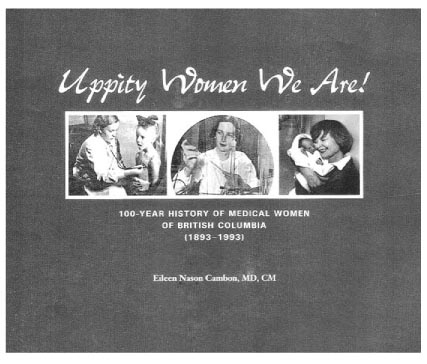Book review: Uppity Women We Are!
by Eileen Nason Cambon, MD, CM

Uppity Women We Are! 100-Year History of Medical Women of British Columbia (1893–1993) by Eileen Nason Cambon, MD, CM. Vancouver, Vancouver Desktop Publishing Centre Ltd., 2008. ISBN 978-0-9694983-1-5. Paperback, 536 pages. $43 (Duthie Books); $47.95 (UBC Bookstore).
The main content of this book was developed when the author sent out requests for an autobiography to over 600 female physicians in BC between 1999 and 2000. Approximately 160 replies were received. The author does not state how she selected the women or whether the process was, indeed, random or selective. Be that as it may, the result is a collection of stories—from brief paragraphs to detailed accounts—telling the tales of these women, many of whom were pioneers in our profession.
Most of the stories are autobiographical, some are written by family members (such as the one on Dr Irene Clearihue written by her daughter Dr Joyce Clearihue), and a few of the earliest ones are compiled from the archives of BC history. The stories are divided by decade from 1893 to 1993.
This is not a book that one reads from cover to cover but rather explores by skipping from one story to another as the mind desires. I checked out a few of my mentors (Doris Kavanagh, Josephine Mallek, and Erica Creighton), a couple of my contemporaries (Vera Frinton and Holly Stevens), plus a number of stories at random. Fascinating details of life in early BC days emerged in addition to a reminder of the ravages of the Second World War as a number of the women or their parents landed on Canadian shores after that conflict. All of the stories that I read were interesting and gave food for thought.
I would recommend this book to anyone interested in the history of medicine or the history of women’s rights. It is a stark reminder of how much we have gained—from the days when most medical schools refused entry to women, to the present when women make up approximately 60% of medical students in Canada. Certainly, this book should be included in the College of Physicians and Surgeons library as well any college or university library where health care professionals are taught.
—LML
